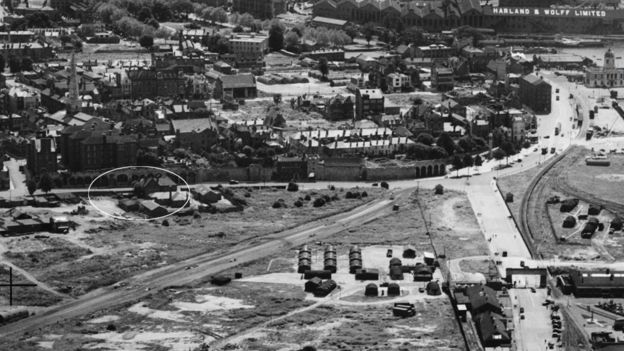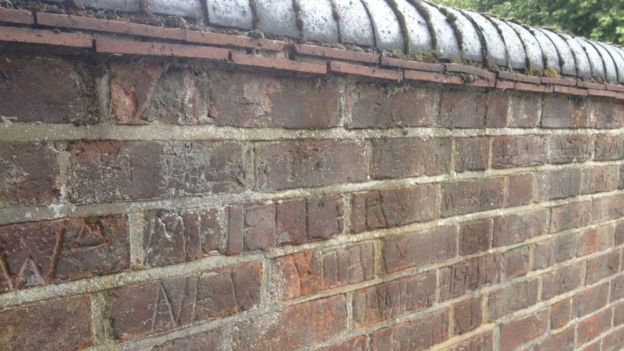Eroding World War II-Era Graffiti in England Recorded
Researchers have discovered the identities of over 30 United States soldiers graffitiing a wall 75 years ago during World War Two.
On the Western Esplanade in Southampton the 62 ft (19 m) ‘ D-Day Wall ‘ has more than 70 names grafted by soldiers who are waiting for the day D to embark on Normandy.
The naval archeology Trust has documented their war records and lives back in the US. Many took part in the Battle of the Bulge from the end of 1944.
The trust began a project to digitally record the wall after historians warned the names were in danger of wearing away.
The wall enclosed the old town mortuary and soldiers queued alongside it as they waited to board ships at what is the current-day Red Funnel ferry dock.
Volunteers used specialist photography to decipher the names before using online genealogy sources and US military records to identify the soldiers and learn more about their stories.
The soldiers are believed to have belonged to the 99th and 106th Infantry Divisions and were among the two million Americans who transited through Southampton to mainland Europe.

Many fought in the Battle of the Bulge from December 1944 – the last major German offensive faced by the allies as they fought their way towards Berlin.
Helen Wallbridge from the trust said finding the military record of Curt Hodges from Chicago proved a “breakthrough”, as it allowed the names of fellow members of his unit to be confirmed.
“Looking at the spacing of the inscriptions, it seems plausible that the men stood in a line and carved their names together.”
“It’s detective work and a jigsaw so it’s great when you get the pieces to fit and you get a name,” she added.
The researchers traced the name William Paul Urban and found he came from Chicago and reached the rank of sergeant before he was killed in action aged 29 in March 1945.
Two of the men named – Robert Golden and William Knight – were found to have been captured and spent the remainder of the war as POWs.


Among others who survived the war, William Mueller from New York went on to become an aeronautical engineer. Twenty-two-year-old Ralph Odom went to work in construction before his death in 2008.
The trust has attempted to contact family members of the veterans, providing them with an unexpected memorial to their departed loved ones.
The daughter of one said: “My gratitude and appreciation are emotions words can’t reach.”
The 19m (62ft) long wall is already a listed war memorial although the names are expected to erode further in the coming years.





